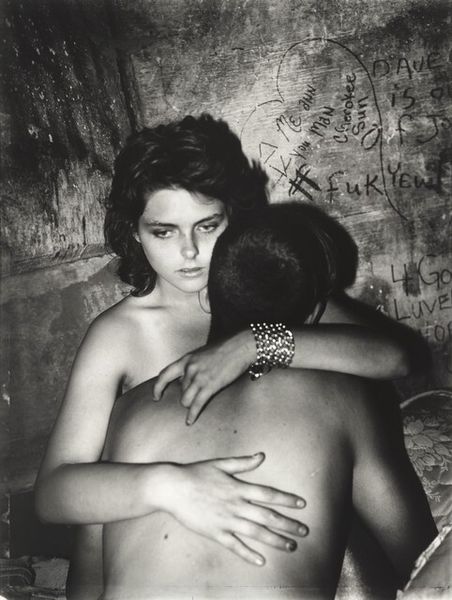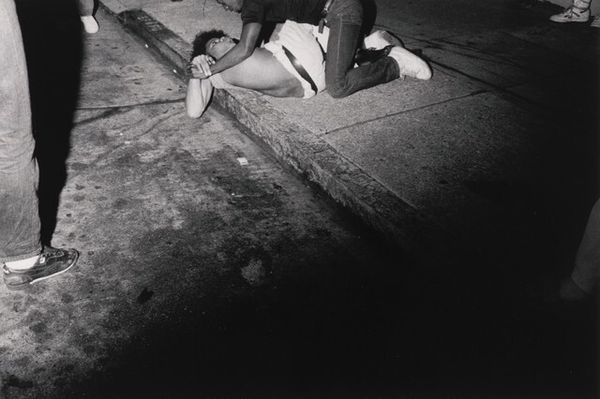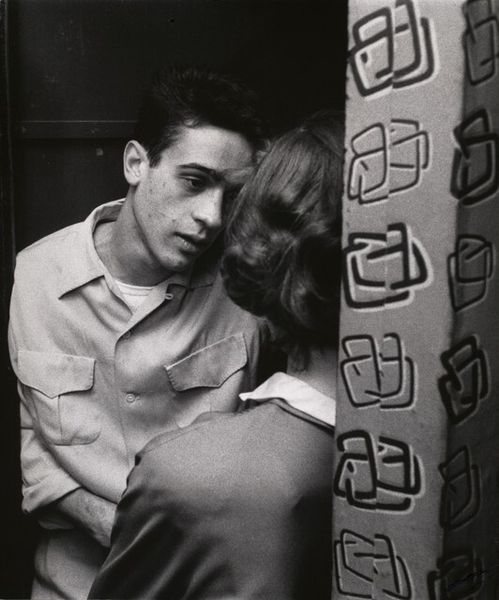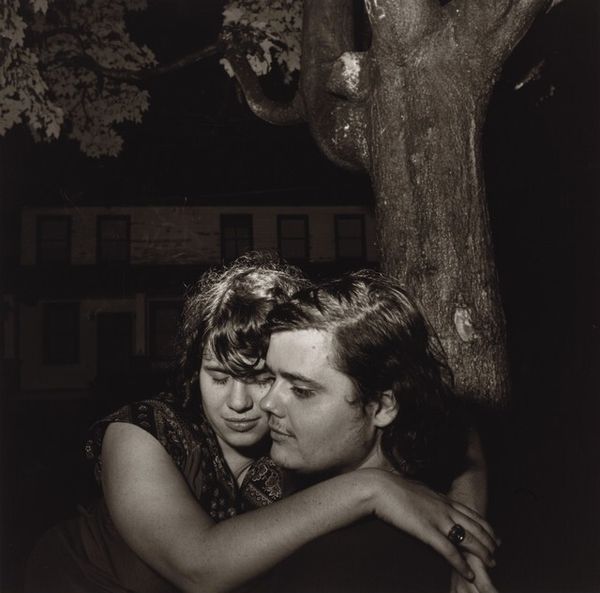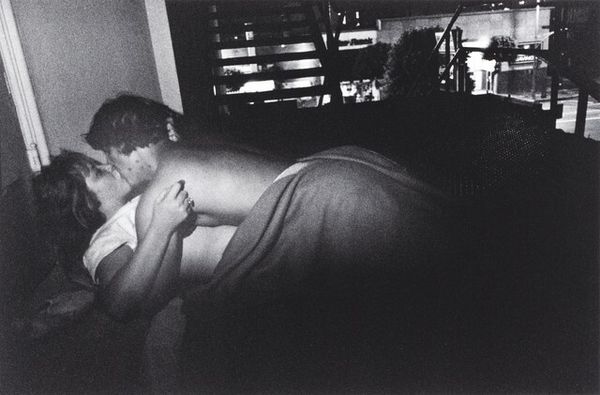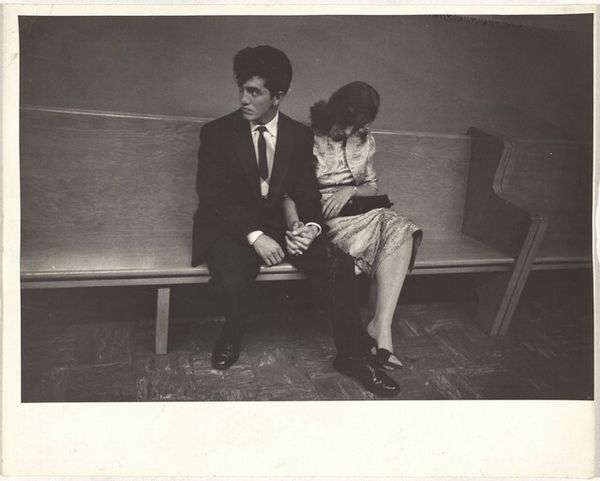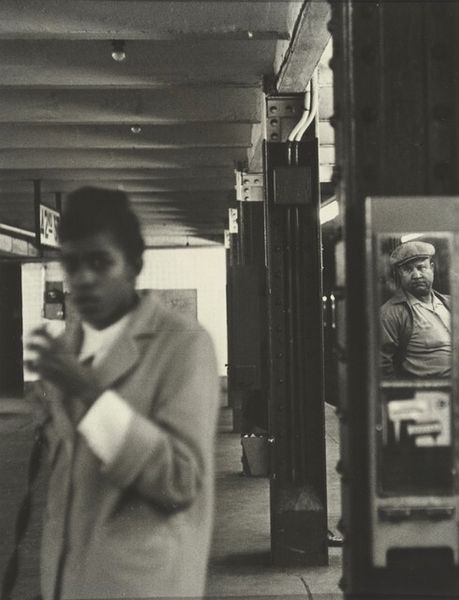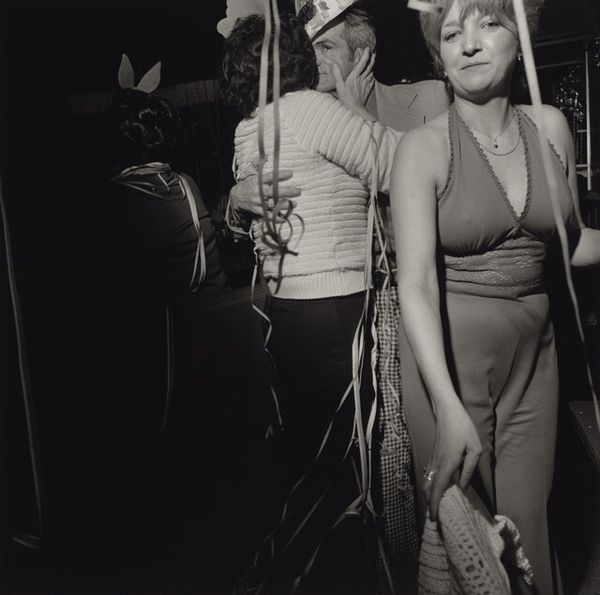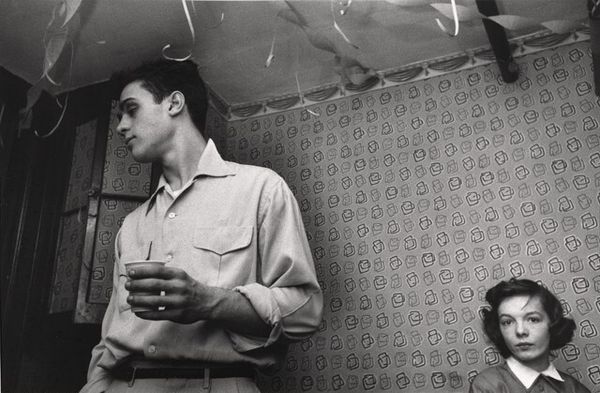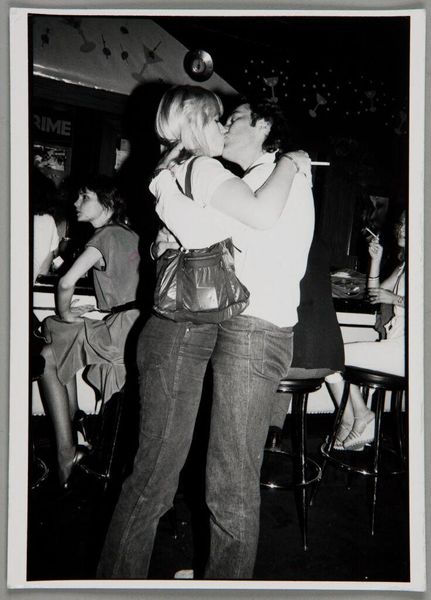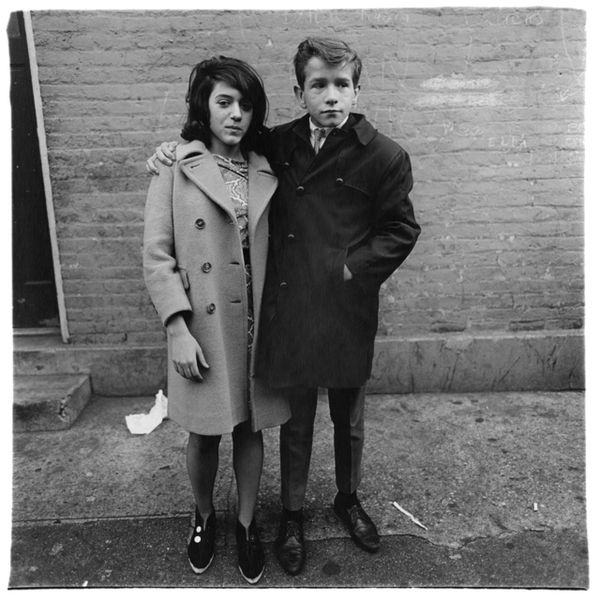
photography
#
portrait
#
black and white photography
#
street-photography
#
photography
#
couple photography
#
monochrome
#
realism
#
monochrome
Dimensions: sheet: 35.4 × 27.6 cm (13 15/16 × 10 7/8 in.) image: 32.4 × 21.3 cm (12 3/4 × 8 3/8 in.)
Copyright: National Gallery of Art: CC0 1.0
Editor: This is "Oasis" by Jim Goldberg, possibly taken between 1989 and 1994. It's a black and white photograph and shows a young couple on the street at night. There’s something about the raw, almost confrontational gaze of the woman holding the video camera that really strikes me. What do you see in this piece? Curator: I see a powerful intersection of personal narrative and social commentary. Goldberg's work often gives a voice to marginalized communities, and in this image, I wonder about the subjects' relationship to the idea of "Oasis" suggested by the sign. Who gets access to this place, and what does it symbolize for this couple? The act of filming, her claiming the lens, resists traditional power dynamics. How does it speak to ideas of representation? Editor: I didn’t consider it that way. I just saw them as people taking a video, but I see your point. By filming, she’s controlling the narrative, right? Curator: Exactly. Think about who typically holds the camera and who is being filmed, and what that implies in terms of power, agency, and control. Also, what's striking is the difference in their gazes. He’s looking out, watchful, while she is directly engaging with the viewer. How do these elements challenge or subvert our expectations? Editor: That makes me think about the history of documentary photography. Was Goldberg trying to move away from that, giving more power to his subjects? Curator: Precisely. He complicates the traditional role of the photographer as objective observer. It also raises questions about class, access to technology, and who has the power to document and represent their own lives. The “Oasis” sign looms almost ironically. Editor: I see the irony now. It's a great example of how one image can hold so many complex social and political questions. Thank you! Curator: Indeed. Goldberg's work teaches us to look beyond the surface, question our assumptions, and consider the social forces that shape individual experiences and representation in visual culture.
Comments
No comments
Be the first to comment and join the conversation on the ultimate creative platform.
